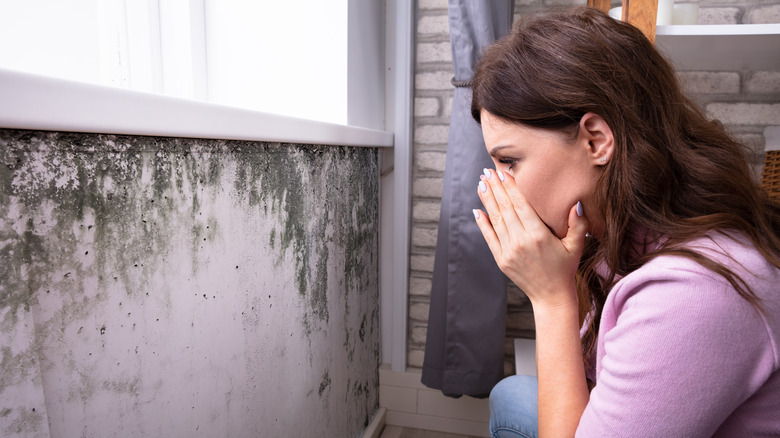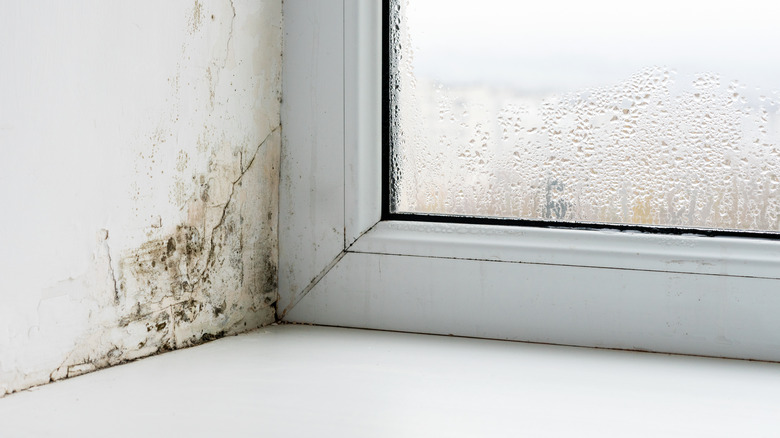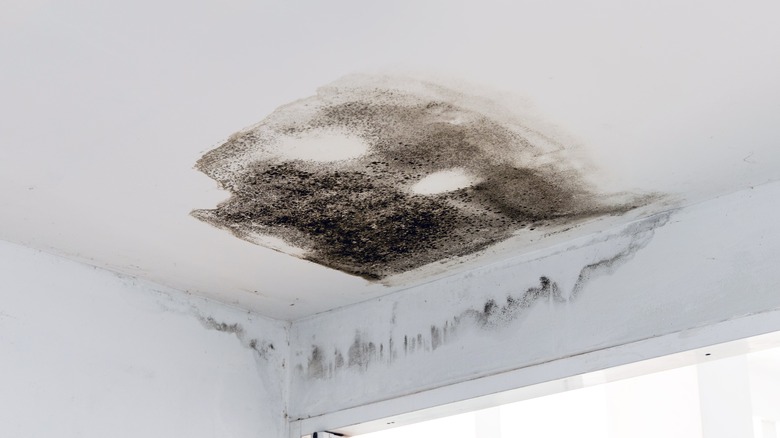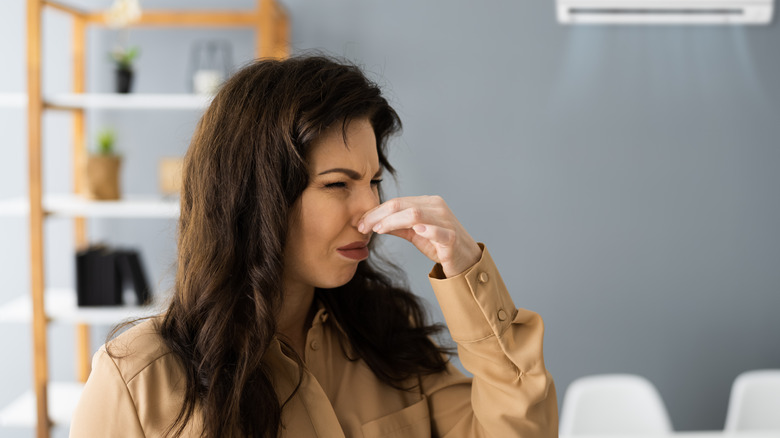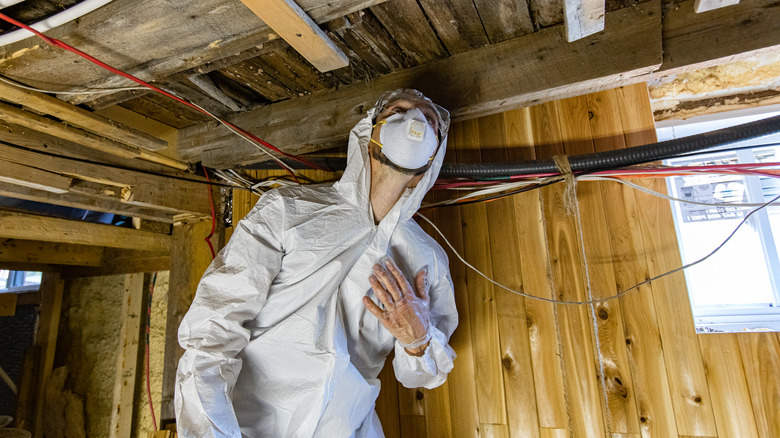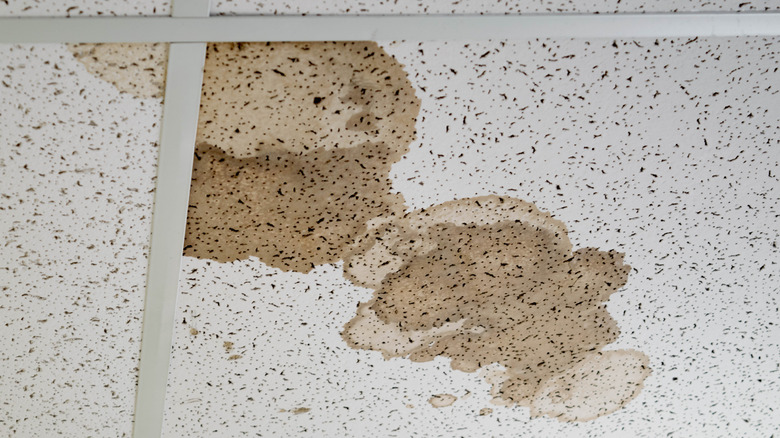5 Tips For Identifying Black Mold In Your Home
Finding an area of mold growing under the kitchen cabinet or behind the washing machine can be instantly worrisome. If you suspect black mold, it's critical to take action since it can cause respiratory complications and numerous other problems. Black mold, according to the Centers for Disease Control and Prevention, like other types, contains some risk to your health, though most are not highly toxic. Still, all forms should be removed.
What's hard to do, though, is to know what type of mold is growing in your home since there are several forms that look similar. While black mold may be dangerous, not all types of mold are, and that may influence how you clean and remove it from your home. The only sure method of identifying black mold is through a professional test. When in doubt, turn to a professional to learn more about proper remediation. To get a better idea of what's occurring, look for these signs of black mold in your home.
The coloring and shape
Black mold is, most commonly, black, but it can also be dark in color, with some areas that may appear multi-colored, according to Wawanesa Insurance. While dark colors, like brown, black, or green, are common, there are some situations where this type of mold can have different colors, including deep orange or even a bit of white within the darker spots. It is also helpful to consider the shape of the spread — look for circular-shaped spots covering the surface.
Various factors can contribute to the color of mold including species, location, and growing conditions. Black mold can also have a fuzzy look from the spores that grow outwards. While it is important to look at the mold closely to determine its appearance, do avoid getting so close that you are breathing it in since this can pose a risk of mold spores entering your lungs.
Where it's located
Mold needs specific conditions to grow and spread, and often there are places in your home that can contribute to this. According to the Centers for Disease Control and Prevention, black mold, also known as Stachybotrys chartarum, commonly appears on fiberboard, paper, gypsum board, and other types of porous materials, often where there is a high level of moisture. It's also capable of growing on insulation, carpeting, fabric, dust, and paints. Any type of cellulose material can support growth, including wood products and cardboard.
Consider areas of your home where this is most likely to occur, such as in bathrooms, kitchens, and laundry areas where there's water often in use. It's also likely to be found in places where there are leaks, like under your roof, around windows, and near pipes. It's less likely to grow on surfaces like cement that are cold and dry. High humidity in any room of the home could be a concern.
The smell
Black mold has a very distinct smell, which thankfully is easily recognized. It is similar to the smell of going into a dark, damp basement that hasn't been occupied for some time and taking in a deep breath of strong, musty odor, according to EverDry Waterproofing. It is also the same type of scent as mildew.
You may think that this scent in the lower area of your home is just the way basements are supposed to smell, but that's not the case. Rather, if you have this odor, chances are good there is mold or mildew growth somewhere, even if you cannot see it, and that's not a healthy environment. Since it is quite common for mold to grow — and even flourish — out of sight, like behind wallpaper or under the carpet, one of the best ways to detect black mold is by this scent.
It's texture
It's not wise to touch mold to feel its texture, but you may be able to see it up close enough to determine what's occurring. If you do touch it, do so with gloves, and be sure to wash your hands thoroughly afterward. Without doing so, it may cause skin irritation and rashes that may need treatment.
So, what's with the touch and feel of it that helps with identifying it? According to Eco Flood & Mold Remediation, it tends to feel slimy, cold, and wet. That's nothing you want to put your hands on, but it is a very common experience. In some situations, it may also appear almost as if it has fur on it, in which case you should avoid touching it as those mold spores could easily become lodged in your airway — you don't have to feel it to know what it is.
Water spots
Sometimes mold can be even tricker to find, and even though you smell it, you may be unsure where to find it. Look for water spots throughout your home or in the area where there is a strong scent, says Wawanesa Insurance. Sometimes, this can lead you right to where the mold is lurking.
For example, if you smell mold in your basement, but you're unsure where it's located, track down the ceiling tiles with water stains and look in that area, including the wood structure, the tile itself, and the flooring under it, to find its presence. If you notice a leak from a roof, check the surrounding area where water could drip down. That water could accumulate in that area over time, allowing the spores to grow and flourish. Anytime you have water leaks in your home, always take the time to inspect that area later for signs of growth.
